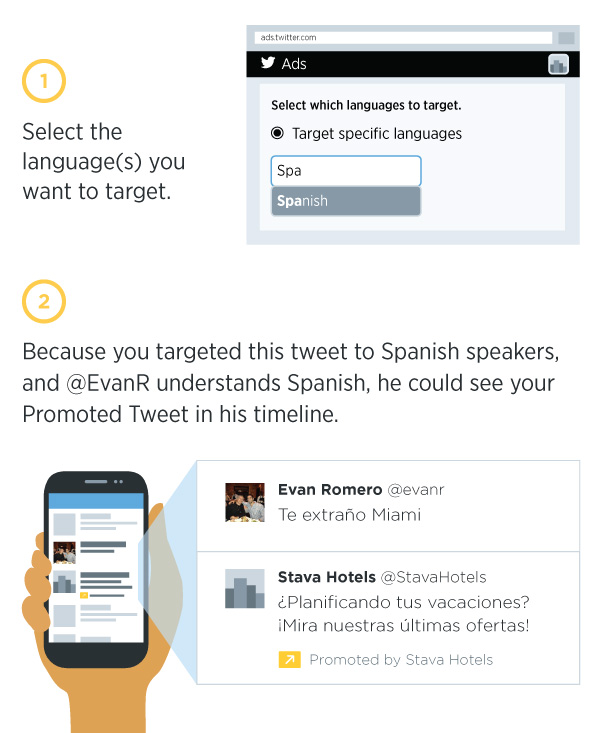Twitter says it uses “a number of different signals” to determine a user’s language, not just the language selected in their profile settings. The company also looks at the languages that correspond to their activity on Twitter, meaning a user can be targeted by multiple languages if Twitter decides that a user is multilingual. For advertisers, using the feature is a very straightforward two-step process:
Here’s how Twitter explains the benefits of the new feature: Other social networks have had this for a long time, so it’s not exactly groundbreaking. It’s more of a “finally” for Twitter, which probably should have offered the option to advertisers long before it went public. Thankfully, Twitter already offers other targeting options based on interest, keyword, gender, location, and tailored audience segments. As such, advertisers will be able to use language targeting in conjunction with these to optimize their ROI. Twitter offers an example: a travel brand that wants to reach Spanish-speaking travelers in the US can combine US geo-targeting, travel-category interest targeting, and Spanish language targeting. To advertisers, that sounds great. Whether the feature works as intended, and how well, remains to be seen. See also – Twitter passes 255m monthly active users, 198m mobile users, and sees 80% of advertising revenue from mobile and Twitter opens its advertising doors to small businesses in the UK, Ireland and Canada Top Image Credit: Scott Beale/Laughing Squid
